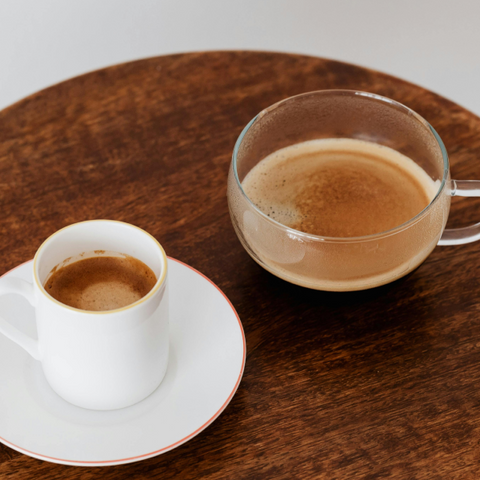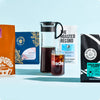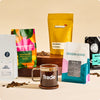One of the most common questions people ask when they’re first getting interested in coffee (or after they’ve been interested in it for a while but finally have the courage to ask the question) is, “What’s the difference between coffee vs espresso?”
There are plenty of reasons for the confusion: For one, the two often have separate sections on a coffee shop’s menu. They certainly taste very different and are even consumed differently most of the time. The brewing process for each is also done with very different equipment.
And espresso is mythologized in a very peculiar way, with everything from online forums full of arguments about what’s “proper” espresso to the fact that it requires a specially trained professional—a barista—to prepare it, all the way down to the types of language we use to describe it. (I’m looking at you, “God shot.”)
Before you purchase your morning coffee beverage or opt for a coffee subscription, let’s get to know the differences between coffee and espresso.
Espresso is coffee brewed under pressure; coffee is not

One of the primary differences between coffee and espresso is how they are made: For most other coffee brewing methods, the extraction process takes place over a moderate amount of time (4–5 minutes) either by full-immersion steeping, like in a French press or through a kind of progressive extraction aided by the force of gravity, like with a pour-over or drip brewer.
Espresso, on the other hand, is brewed using the force of significant additional pressure. (Think of the “press” in “espresso” as a reminder.) In the original days of brewing espresso coffee, this pressure was created using steam power; today, a modern espresso machine uses electric pumps that can force water through the bed of coffee grounds at 9 atmospheric bars of pressure, or about 130 pounds. This pressurized brewing method allows the extraction to happen much faster, typically between 20 and 30 seconds.
Espresso is a concentrate; coffee is diluted
In addition to being brewed by the force of considerable pressure, espresso is also brewed as a concentrate, meaning there is less water and more coffee flavor material (along with other compounds) in the finished beverage. While you can certainly brew a stronger, or more concentrated, cup of drip or French press coffee, you will still likely have a final product that contains less than 2% of extracted coffee. An espresso shot, on the other hand, generally contains between 10–13% coffee material.
Does espresso have more caffeine?
Short answer: No.
Longer answer: It depends on how much of either you’re drinking.
An espresso shot typically contains around 50 to 60 milligrams of caffeine per ounce. Since most espresso comes as a double shot, or two ounces, you may be drinking about 120 milligrams in your Americano or macchiato. On the flip side, a cup of brewed coffee can contain around 18 milligrams of caffeine per ounce, but you’re likely to drink more of it: An 8-ounce brewed coffee can have 144 milligrams of caffeine content or more.
Does espresso require different beans than coffee?
Are you curious about how to make espresso at home? Espresso is just another way of brewing coffee, just like poaching is just another way of making eggs: You don’t need to buy different eggs to poach than the ones you buy to scramble. Coffee beans are the same way.
Many roasters will advertise particular bags or coffee blends as “espresso beans,” but that’s just a suggestion: Because espresso is such a potent flavor experience, some roasters design special coffee blends or roast the coffee bean blend slightly differently in order to create a balanced profile that will be approachable to home espresso drinkers. But you can use regular coffee beans to make espresso. Some people prefer single origin coffee over coffee blends just like some people prefer light roast coffee over dark roast coffee. It really just comes down to your taste preference.
When to drink espresso versus coffee

There are many reasons someone might opt for drip coffee over a variety of espresso coffee drinks and vice versa.
Brewing espresso is often quicker than regular coffee and it can be made to order: If you go to a coffee shop and are unsure how fresh the coffee in the carafes is, you can order an espresso and know that what you’ll receive has just been prepared before your eyes.
You can easily make single servings of coffee when you prepare it as espresso, whereas a drip or pour-over coffee drink might be better for a crowd or for sharing.
Some types of drip coffee become overwhelmed by the addition of milk and sugar, while the stronger flavors of espresso can show up more prominently in a milkier coffee drink.
Flavor preference comes into play, too: While some folks love the more delicate and lighter flavor of coffee, some prefer the punchy taste that espresso packs.
If you plan on brewing your own coffee beverages at home, check out our coffee brewing tips to learn more!






